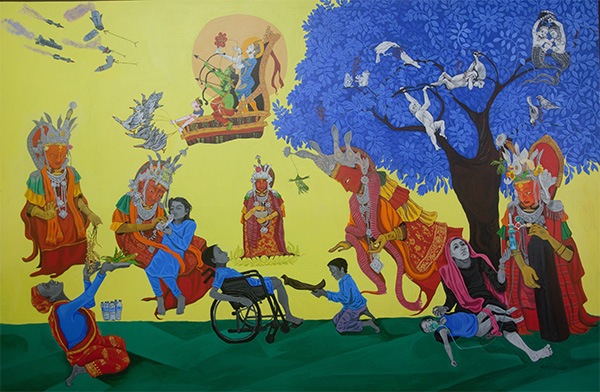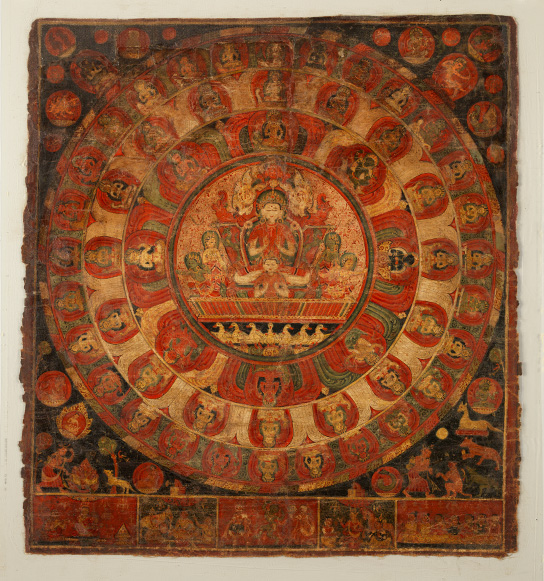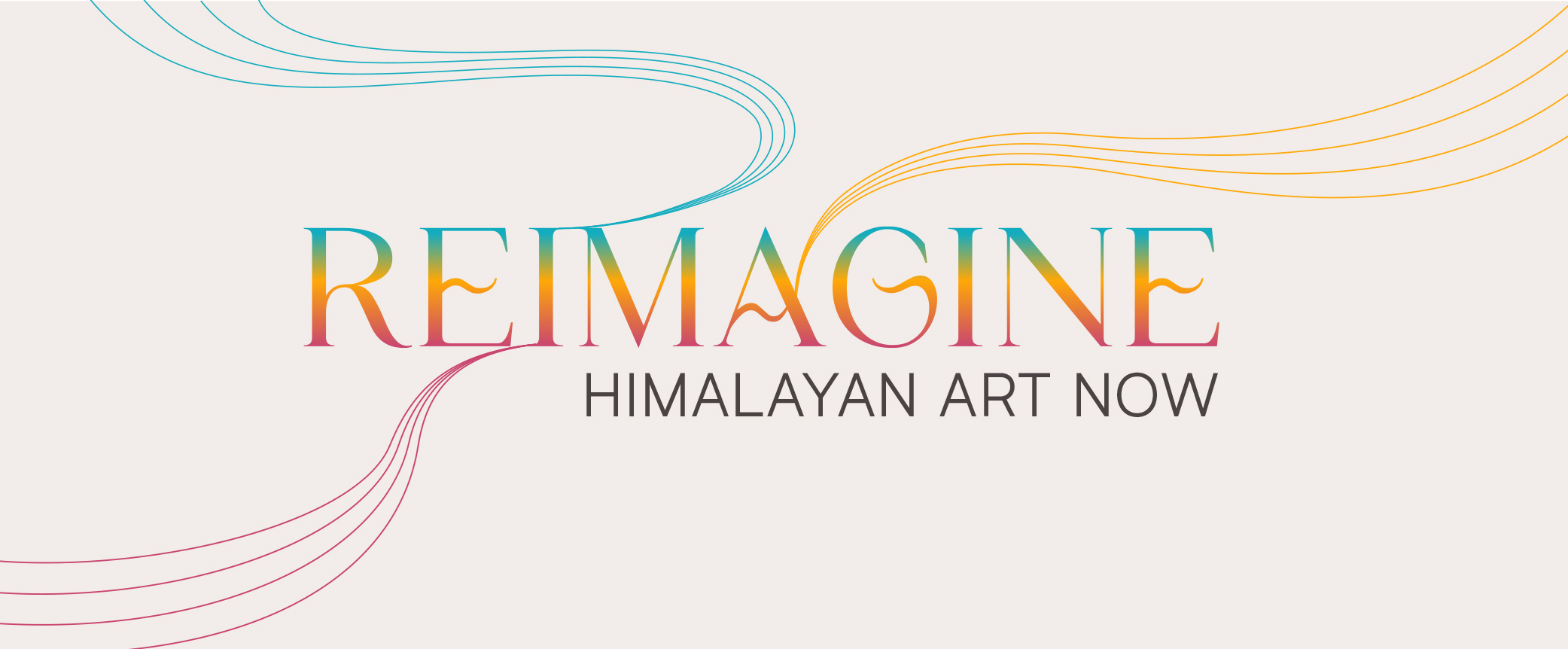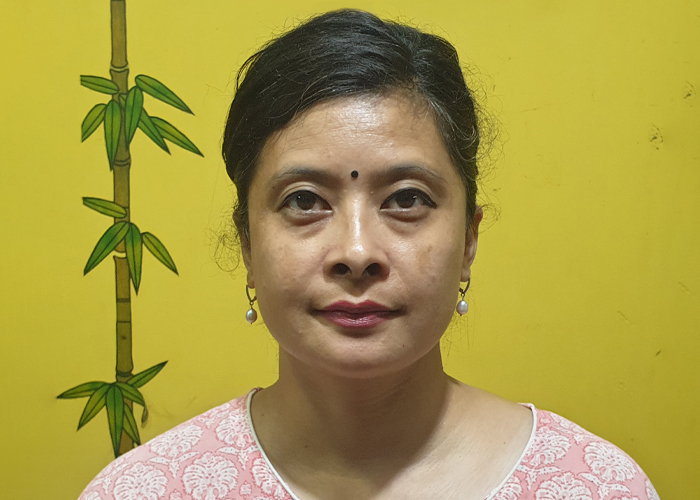
Jasmine Rajbhandari
Reimagine: Himalayan Art Now
March 15–October 6, 2024
LISTEN TO THE ARTIST
ABOUT THE ARTIST
Jasmine Rajbhandari (she/her)
b. 1980, Birgunj, Nepal; lives and works in Kathmandu, Nepal
Jasmine Rajbhandari is an assistant professor in the department of fine arts at Tribhuvan University (Nepal), where she is currently studying to receive a PhD in painting. She previously received a Master of Fine Arts from Banaras Hindu University. She organized many art exchange programs in India and Nepal through Zero Century Fine Art Foundation. The artist has had one solo art show and participated in more than 50 group exhibitions, including Expo-2000, Hanover Germany; Fables on the Floor, Taragaon Museum (2017); Amalgam, Siddartha Art Gallery (2019); 9th Beijing International Art Biennale, China (2022); Himalayan Art Festival, Art Council (2022); and Deities of Nepal, Nepal Art Council (2022). She was awarded the Young Talented Award in Watercolor, Ranglal Bangdel memorial exhibition (1999) and Third Prize, 35th National Art & Craft Exhibition (2006).
ABOUT THE ARTWORK IN REIMAGINE

Compassion is inspired by the Panchadan Festival, a Buddhist festival observed by Bajrayana Buddhists, and the global issue of war. The painting features the five Dipamkara Buddha statues of the festival reimagined as compassionate beings helping women and children suffering from war. They provide oxygen cylinders, food, blessings, prosthetic legs, and water. Seemingly absent from the image are men, perhaps suggesting that they are the invisible perpetrators of the injustices. On the right is a big tree of life, where monkeys play, birds and squirrels eat ripe fruit, and Nagraja and Nagin enjoy themselves, signifying the normalization of life for those unaffected by the tragedies of war.
Inspired by the Rubin Museum’s Mandala of Chandra, the artist reimagines the Hindu moon god Chandra in his chariot with his two wives and charioteer in the sky above. They are warring against missiles and warplanes to stop the disaster of war and restore cosmic balance. The painting portrays both Hindu and Buddhist gods as the messengers of compassion, symbolizing the need for humanity to unite in the effort against war, as these religions have coexisted in Nepal for almost two thousand years.
RELATED RUBIN OBJECT

This object from the Rubin Museum’s collection is presented in the Reimagine exhibition in dialogue with Compassion, inviting new ways of encountering traditional Himalayan art.



